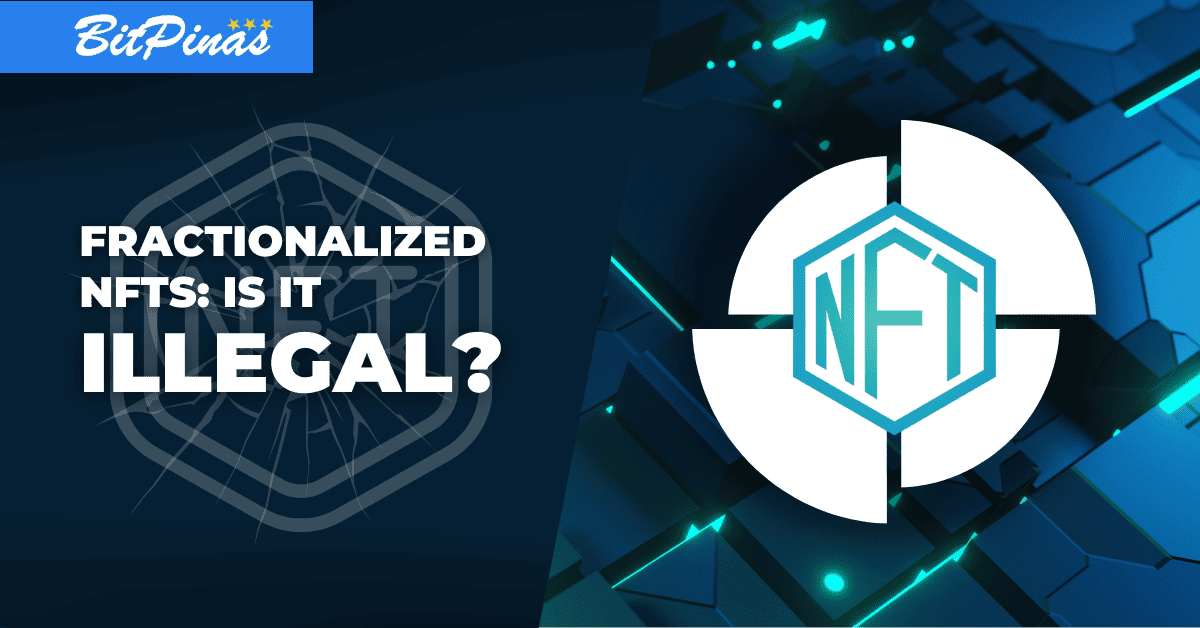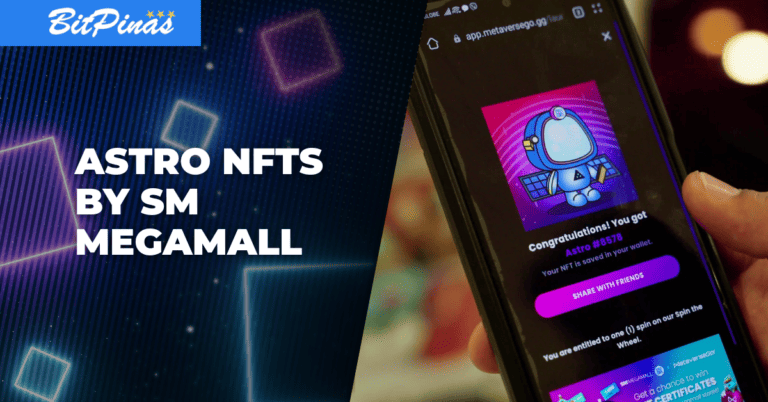Are Fractionalized NFTs Illegal?
Meanwhile, the commercial lawyer also emphasized that even if the owners of a certain fractionalized NFT will earn, it will still not be considered as security because it is from the secondary market.

Atty. Padilla: Be Careful in Doing Fractionalized NFTs
“If you’re doing fractionalized NFT, may risk na pwedeng ma-consider na security. So, you need to tread carefully. I am not saying that fractionalized NFTs are securities, but you have to be careful.”
[“If you are doing fractionalized NFT, there is a risk that it can be considered as a security. So, you need to tread carefully. I am not saying that fractionalized NFTs are securities, but you have to be careful.”]
This is a reminder from Atty. Rafael Padilla, a Commercial Lawyer specializing in Fintech and Crypto, about the idea of making fractionalized non-fungible tokens (NFTs) to make NFTs cheaper and more accessible to the market during a Twitter Space hosted by BitPinas last March 25, 2022.
“If the purpose of the fractionalized NFTs is to somehow decentralize the curation of the artwork, (it is not considered as security), like what happened to the fractionalized NFT of Pol Medina Jr. In other words, gusto lang natin na may grupo tayong sama-sama tayong nagcu-curate ng artwork, the fractionalization in itself will not be considered as a security,” Padilla added.
[“If the purpose of the fractionalized NFTs is to somehow decentralize the curation of the artwork, it is not considered as security, like what happened to the fractionalized NFT of Pol Medina Jr. In other words, if we just want to have a group that curates the artwork, then the fractionalization in itself will not be considered as a security.]
Read more NFT and Law Articles:
- What is the Current State of NFT-related Laws in the Philippines?
- Are NFT Art and Collectibles Considered Security?
- Should Filipino NFT Projects Just Register Abroad?
- Are Project Owners and Influencers Responsible for an NFT Rug Pull?
- Are NFT Game Assets Considered Investments or Security?
- NFT Royalty and IP Guide | NFT Law 101
- What to Avoid When Marketing NFT Projects?
Padilla’s example is the fractionalized NFT artwork of Pol Medina Jr., known for creating the iconic comic strip Pugad Baboy, that was released in March 2022.
Medina partnered with Ark of Dreams in releasing his own NFTs that highlights the book covers of Pugad Baboy and some of his personal artworks.
Meanwhile, the commercial lawyer also emphasized that even if the owners of a certain fractionalized NFT will earn, it will still not be considered as security because it is from the secondary market.
However, he warned that the problem is when a fractionalized NFT creator will market the NFTs as an investment product, then that will be considered as a security.
“And so, when we tell our NFT buyers that: ‘you can buy fractionalized NFTs so you’ll have an exposure, and you’ll look at the price appreciation of NFTs based on some historical precedents.’ If that’s how we’re marketing it, that becomes more and more dangerous, and it’s possible that that can be considered as an investment product,” he added.
In the same Twitter space, Padilla highlighted that in order for an NFT not to be tagged as security, NFT creators should not promote it as an investment product, as a financial service, or have a misleading advertisement.
In addition, he also stressed that NFTs can also be considered as a security if the royalties go to its retail investors, insisting that the royalties of an NFT should only go to its creators to be considered safe.
Nonetheless, Padilla valued the idea of a fractionalized NFT as a feature to allow retail investors to own a fraction of the NFT that would be expensive if they will purchase it as a whole.
On the other hand, the fintech and crypto lawyer also warned NFT creators that pattern their NFTs to existing frameworks that are tagged as security.
“We have to be careful also when we’re patterning them from existing frameworks like projects patterning their NFTs, parang fractionalized (NFTs) din pero ang concept nila ay parang timeshare, eh delikado talaga ‘yon, kasi timeshares are considered securities eh, that’s straightforward security,” he added.
[“We have to be careful also when we are patterning them from existing frameworks like projects patterning their NFTs, it is like fractionalized NFTs but the concept is like a timeshare, and that is a dangerous move, because timeshares are considered securities, that is a straightforward security.”]
A timeshare is a method where a buyer can only pay for a certain place in a limited time. In that way, the buyer can be a temporary owner for that place that he paid for.
An example of this is a family that is going on vacation, they can timeshare the resort they wanted for a week; thus, they are considered as the resort’s owner for a week.
It is like a fractionalized NFT, but instead of the fraction of an NFT being shared, it is the time allotment of who will be the owner of that resort in a given period of time.
Around the previous year, some real states entered the blockchain and promoted NFT-powered resorts around the globe.
Lastly, the lawyer reiterated that creators should be careful when marketing NFTs, whether it is an art, collectibles, or even if it is fractionalized.
“Just because this is NFT, does not mean that laws relating to securities and analogous models, that will not mean that securities law will apply,” Padilla concluded.
What is Fractionalized NFT?
Fractionalizing an NFT is the process of dividing the owner of an NFT into fractions, making it an NFT with multiple owners.
Some of the advantages it can give is it offers a cheaper deal since a fraction of NFT is much cheaper compared to an NFT’s price when someone will buy it as a whole.
As of writing, the total market cap of fractionalized NFTs, according to DappRadar, is approximately $85,931,630.00.
This article is published on BitPinas: Are Fractionalized NFTs Illegal?
Disclaimer: BitPinas articles and its external content are not financial advice. The team serves to deliver independent, unbiased news to provide information for Philippine-crypto and beyond.





